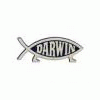-
Posts
796 -
Joined
-
Last visited
Content Type
Profiles
Forums
Articles
Gallery
Downloads
Events
Posts posted by Sam Thompson
-
-
As with most things, skillful application of things like critical heat,manual dexterity, timing and the proper use of tools all come into play and can make all the difference when it comes to satisfying the customer and have them return again for future artistic endeavors.If you`re very good they may even tell their friends!
What colour should they be when you dip them in the water? -
I think I once saw something similar at an auction. They were like big "stakes", maybe 4" wide with a D shaped cross section, about 3 to 6 foot long. I still kick myself for not getting them cos they looked real useful. If the ebay ones were a little nearer I'd bid for one. That would be yet another reason for me to get a "dogging" table. Dogging over here also has another meaning.
.
Kidderminster is only about 30 miles from me, if you need one collected... The chap with three looks like a dealer. -
Strewth! There's a whole nest of them.
http://cgi.ebay.co.uk/Blacksmiths-Bench-Bar-/160456977899?cmd=ViewItem&pt=LH_DefaultDomain_3&hash=item255bfb2deb
They look like large hand-rail section to me. -
I've sometimes needed tongs with particularly hot women.
-
As far as I know it's the accepted wisdom never to use tongs with any sort of weld under a power hammer. I've always assumed that is because of weakness.
-
thats a funky looking grip. Must find out if it's available over here
I think Lidl and Aldi are the closest we have to HF! -
I'd be okay, I'd have my apron on.
-
Never use self-locking pliers of any kind for this, they can spring open without warning. It's easy enough to make a pair of tongs to do this. Ordinary pliers are ok too.
-
What do you want to make holes in? Most round (and square etc.) punches for steel have flat ends and taper up to the gripping area, a bit like a large, blunt centre-punch. Slot punches (used mostly for WI) differ depending on which side of the pond you are working. If I described an English one my head would be bitten off!
Round punches are driven into the work on the face of the anvil until almost through, removed, cooled and used over the hardy hole to drive out the small disc of metal from the other side. For anything up to 3/8" thick this can easily be done in one heat. For thicker steel the punch should be removed and cooled about 1/2 to 2/3 of the way through and cooled. Another heat can be taken if necessary. Some people put a bit of coal dust into the hole to help blow the punch back out. It is important not to let the tool overheat as it can mushroom and stick in the hole.
Speed is important as, when you turn the piece over, you position the punch on the area that has been chilled against the anvil. The disc will come out cleanest at a dull red heat. -
I've heard of these but never seen one. Does anyone know how to mount/use them?
http://cgi.ebay.co.uk/VINTAGE-BLACKSMITHS-SHAPING-BAR-/110564403606?cmd=ViewItem&pt=UK_Hand_Tools_Equipment&hash=item19be26e996 -
You'll find that the tongs won't hold the work firmly.With rounded jaws the contact is in a line across the mouth and this will act like a hinge. The jaws need to be flat. Good luck!
-
To all who hate vise-grips: Send all yours to me. I will give those pesky things a good home...
Send me the postage! -
My roof leaks quite badly so as long as the fire starts while it's raining I'm fine.
-
We were always told that the cracks started at the square corners of the holds and the problem was cured by radiussing them. Incidentally, I was talking about this with a chap who was on the first Liberty ship to return to the US. To express our gratitude for the materiel you so generously sold us, the return cargo consisted of Trilby hats and condoms.
-
Sorry to be obvious but are you sure it's spring steel?
-
You sometimes find this kind of thing under old beds.
-
I'm not sure how to add the link but heres the story behind the tool. http://www.livinghistoryfarm.org/farminginthe40s/machines_12.html
I notice they were used in the building of liberty ships, the early examples of those were notorious for falling apart! -
I don't care... I can't see it from where I stand!
-
-
It's a very long apron.
-
I bet that's just the situation the guy was thinking of when he invented them!
-
One of the few items that I always wear is an apron; trousers are expensive.
-
Course you didn`t feel a thing!You`ve got all that steel plate and lower leg collar attaching the vise firmly to a solid hardwood bench leg that is buried in the ground!!!
That`s like saying I never felt the stones being thrown at my tank.
So, I've proved my point... If you mount the vice securely then the leg doesn't transmit any of the energy of the blow into the ground and the leg is only there as a brace! :P -
Practice. :)


Using Tongs can be Frustrating!
in Tongs
Posted
Have any of them complained?